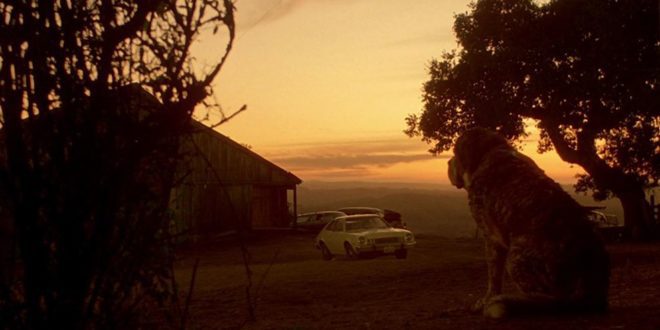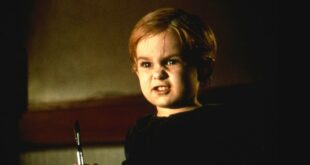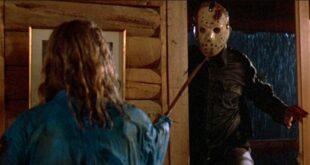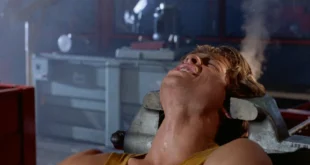Directed by Lewis Teague (who went on to direct Cat’s Eye) and originally written by Stephen King, Cujo (read our interview with Dee Wallace – here) is most impressive for its realism.
Rather than being cursed by magic or something inexplicable, a St. Bernard named Cujo contracts rabies after getting bit on the nose by a bat. There is simplicity in it and a realism that’s usually not as present in supernatural fare.
An obvious chilling aspect of Cujo? Rabies is very real, and could potentially afflict family pets. Although rabies is increasingly rare (due to vaccinations, education and effective treatment), it is still possible to contract the disease or to be attacked by an animal that has it. Also, it’s a case of nature itself providing a Jekyll & Hyde scenario, which is fascinating in its own way.

Cujo is a family drama as well. It glimpses into many interesting issues, like how affairs can threaten a marriage, the reality of a father who’s off on business (and unable to protect his child), and whether or not a child should be named Tad (a potentially serious issue unto itself). Specifically, Cujo deals with the Trenton family – Vic the father (Daniel Hugh-Kelly), Donna the mom (Dee Wallace), and the aforementioned Tad (Danny Pintauro).
Another classic story element is Tad’s fear of the monsters, for which he turns to his parents — the biggest authority figures in his life. While many stories deal with a fear of the dark, monsters under the bed, etc., it’s refreshing how Cujo takes that monster and makes it entirely organic, and something we can’t abolish just because some may not believe in it. Also, when Tad first met Cujo, the dog was nothing like a monster. So, the transformative aspect of the story is both literal and figurative.
When Donna and Tad must face Cujo, it’s simply a case of wrong place, wrong time — Donna visits an auto mechanic’s house for further repairs on her Ford Pinto. When Cujo attacks them, they become trapped inside the stalled vehicle, where they also face possible dehydration and heat stroke.
It’s another example of threats from the mundane, and how any number of situations can become a prison, and a living, natural hell. Stephen King was very intuitive in creating a plausible scenario, and the director was smart enough to not get in the way of the story (many directors attempt to add style where none is needed).

Basically, that is the story of Cujo — quite simple, and almost impossible to discuss without exposing its simplicity. I first saw Cujo as a kid, and perhaps that’s the best way to see it, as a sort of precautionary tale to the young about dangers potentially coming from anywhere.
While adults might invent reasons to scoff at the movie, a kid will more likely see it as inherently scary, and understand entirely where King was coming from. While we shouldn’t be afraid of everything, we should be aware of its power.
Final Thoughts:
The idea that a rabid, hostile dog — man’s best friend — can come after us at any time is quite unsettling. Cujo invites us to think about that and manages to be both heartfelt and terrifying in the process. Now, go fetch yourself a copy of this movie!
 PopHorror Let's Get Scared
PopHorror Let's Get Scared




